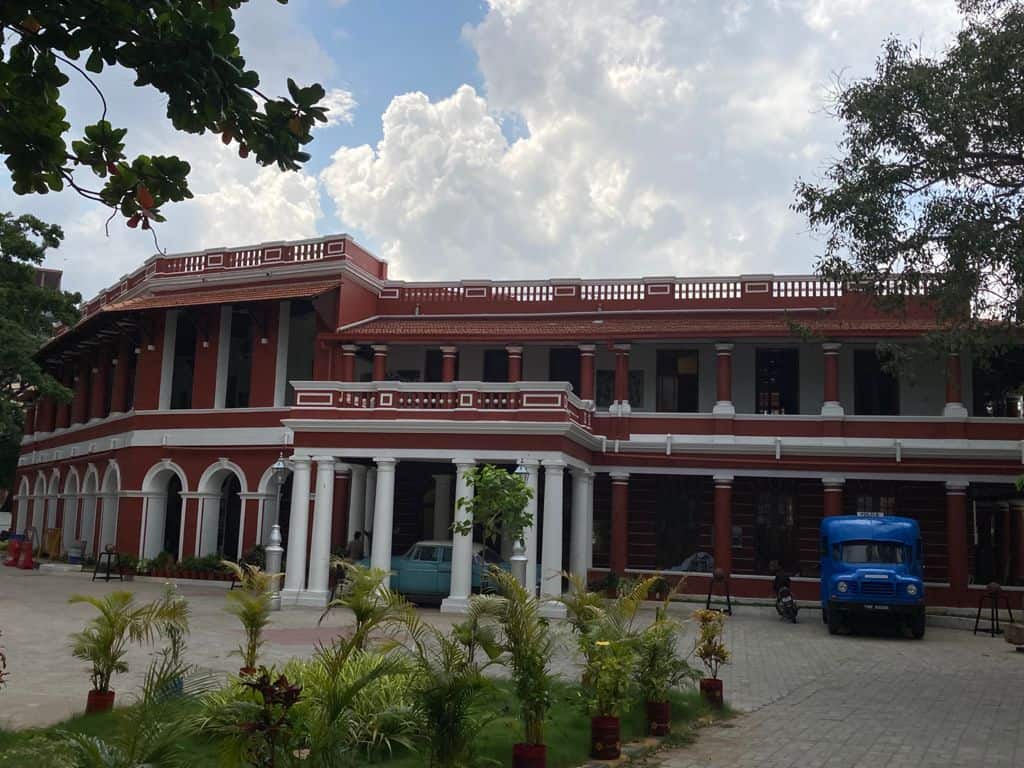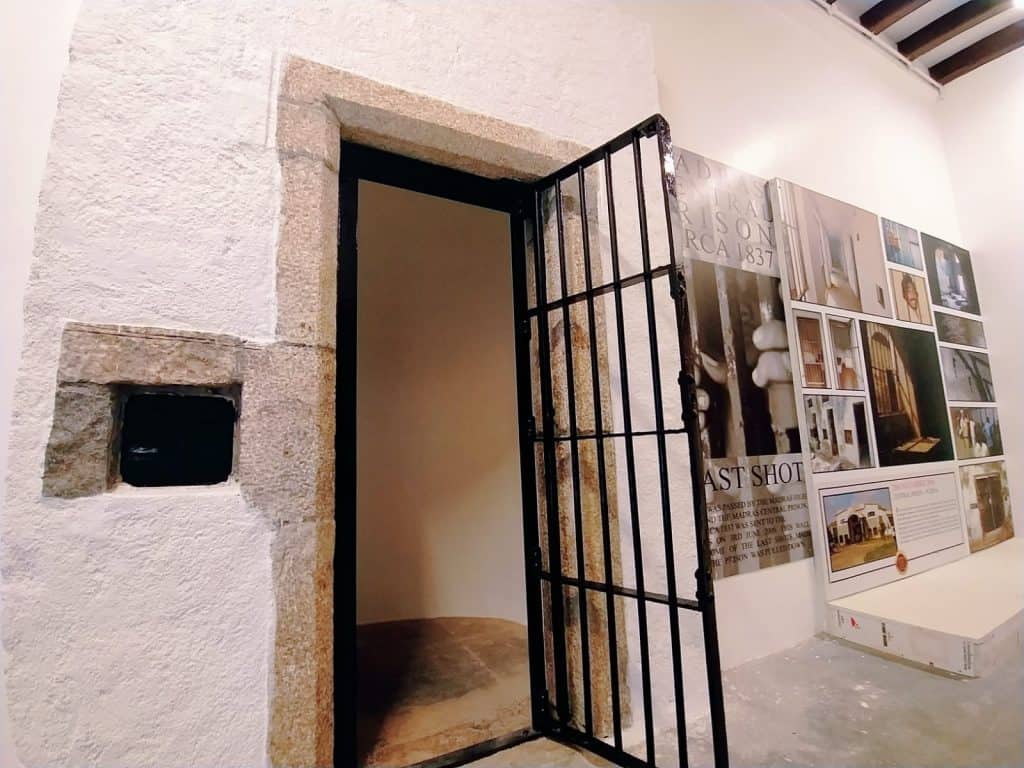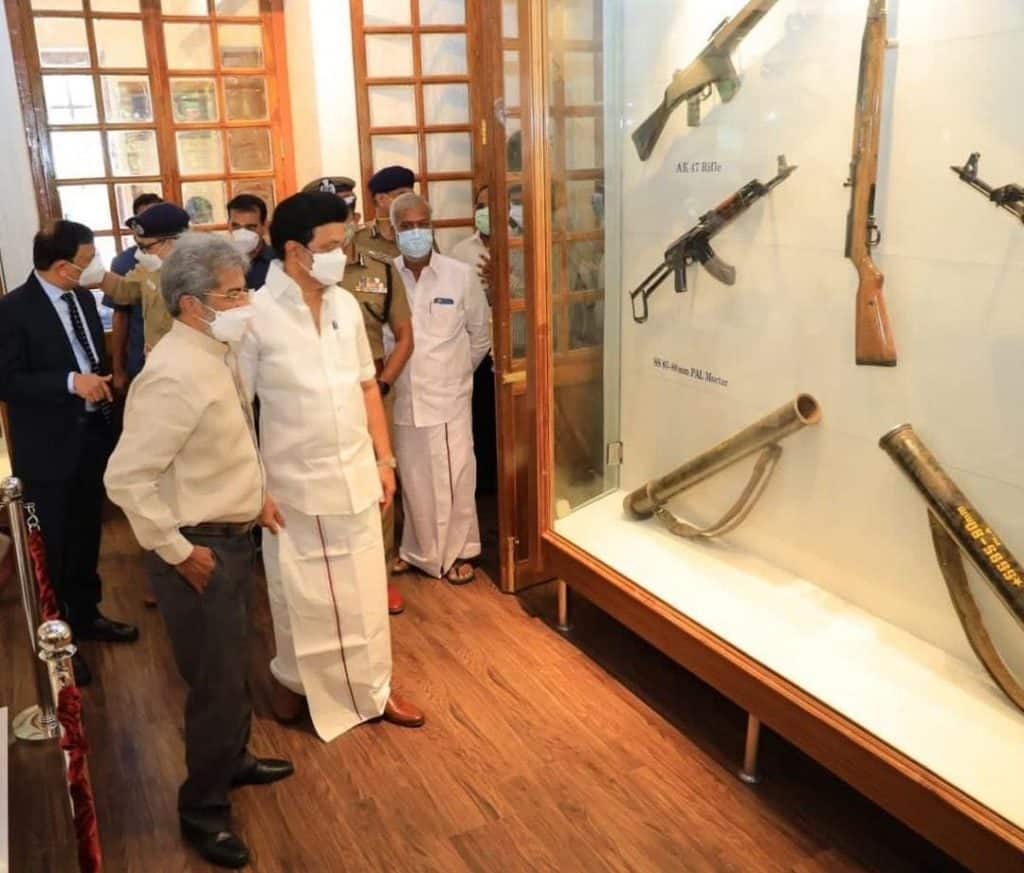Ever wondered what it would be like to touch the rifle used by former chief of the Liberation Tigers of Tamil Eelam (LTTE), Prabhakaran? Or get yourself locked up in one of the oldest prison cells in Tamil Nadu? Or, in the words of Steve Borgia, “to interact with history”? Well, it need not be restricted to just imagination: you can experience this and more right here in Chennai – the Tamil Nadu Police Museum in Egmore.
Housed in the 165-year-old former office of the Commissioner of Police, the museum was opened to the public for the first time on September 28th, after it was inaugurated by MK Stalin, the Chief Minister of Tamil Nadu. Spread over two floors and consisting of various artefacts used by the state police department over the years, some of them even as old as two centuries, Steve Borgia, who is the executive curator of the museum says that the museum is a way of honouring the service of Tamil Nadu police. Borgia, who is currently the Chairman and Managing Director of INDeco leisure hotels, is also known for his contributions to the development of the tourism sector in India, namely rural tourism.
Citizen Matters caught up with Borgia to know more about the police museum, what motivated him to take up a project such as this and what the museum means for the people of the state and more. Here are some excerpts from the interview:
What brought on this idea to turn the old Commissioner’s office into a police museum?
From 1856 onwards, after this bungalow (police museum now) was acquired by the first Commissioner of Madras Police, Lt Col JC Boulderson, till 2013, this was the place where all the Commissioners of Chennai sat and officiated. I don’t have to talk about the style and architecture of this building: anyone passing the Pantheon road in Egmore for the first time would stop and stare at it for a moment. But as years passed by, it became difficult to maintain this heritage building and its condition started to deteriorate, following which the government in 2013, decided to move the Commissioner’s office to a new building. However, JK Tripathi, the then DGP was concerned about the bungalow and wanted to preserve it so he got in touch with me and that’s how we came up with the idea of a police museum. And I, being a huge fan of museums, didn’t want to miss out on this opportunity.

Your passion for museums is known. One of the hotels you manage also consists of a museum that you curated. Could you tell us a bit more about how you developed this interest in museums?
One of my life’s missions is to curate at least twenty five museums. It’s possible for anyone to construct a palace-like structure in an attempt to give it a “historical” feel, but what is a palace without its artefacts? Or without the golden plate from which the royal family ate or without the swords used by the kings ? If I take my son to a palace, he should be able to understand how a palace is different from an ITC hotel. That is where the difference lies.
When I say that this is the pot in which Veerapan ate his last meal, it whips up a different kind of excitement than what one would feel if his picture alone had been placed there. When I say that this was the revolver used by LTTE chief Prabhakaran, that revolver links you to history. This was my idea. I wanted this place to be linked to history.
Read more: From Victoria Public Hall to College of Fine Arts — who will save our heritage buildings?
How did you go about curating exhibits for the police museum?
I have a team of ten architecture students as co-curators and they have been helping me in this process. Having said that, curating a police museum was not a difficult task for me, because of the fact that I’ve been following a lot of police cases across TN right from my childhood days. So, I had a sort of an idea of how or what a museum for TN police should look like.
For example, one of the first cases of counterfeit notes in TN came from a man named Krishnan in Coimbatore. A 3,000-page FIR was submitted to the court back then. I read the FIR. For me, it didn’t matter whether he was guilty or arrested. I was curious about the press he used, how he produced the blocks and whether I could get to touch the counterfeit notes. So when we started this museum, I already knew I wanted that fake note machine he used and we managed to get it from the police station in Coimbatore.
We also formed a team within the police department, consisting of ordinary policemen with a good sense of art. They used to tell me about old guns brought by Englishmen in different corners of the state, the tools used by several known criminals that were seized by police teams which they were also part of and so on. Also former DGP Tripathi, his successor Sylendra Babu and ADGP Amal Raj were completely involved in the process with me and offered me unconditional support, which made the curation all the more easier.

Can you tell us about some of the interesting items in the museum?
One is definitely the printing press used by Krishnan, then there are artefacts which are seized from smuggler Veerappan and LTTE chief Prabhakaran. You will also get to see the uniforms worn by the police over the years right from day one, when they would wear those long khaki shorts, and guns used by the state police from the past till date. We have a collection of more than 200 guns. There is a collection of vehicles used by the police since 1870. There is also a section dedicated entirely to precious items stolen from temples. They were all property of the police, to be presented before the magistrate.
Chief Minister MK Stalin inaugurated the museum. What were his thoughts on this initiative?
He was thrilled. He was under the impression that this was going to be just another museum with a lot of pictures and writings. He inspected every artefact and studied them closely. There was an emotional moment as well, when the CM came across a coat hanger designed by former DMK leaders and state CMs, CN Annadurai and Karunanidhi. This had been designed by them when they were imprisoned in Ariyalur jail in 1953 for conducting demonstrations against renaming Kallakudi as Dalmiapuram. The coat hanger was preserved by the then jail warden in his room for a long time and was later handed over to Kaatur Ramiah, a friend of Karunanidhi. We got it from Ramiah for the museum.

Finally, what do you think this police museum means for the people of Chennai?
I will say that the people of Chennai have found another place to visit with their families. I see children taking selfies with Veerappan’s guns, Prabhakaran’s rifles. It’s where families can get clicked with the past. There is a place where they can get locked inside a cell and take photos from outside. This is a type of museum where you can interact with the past.
Also read:
